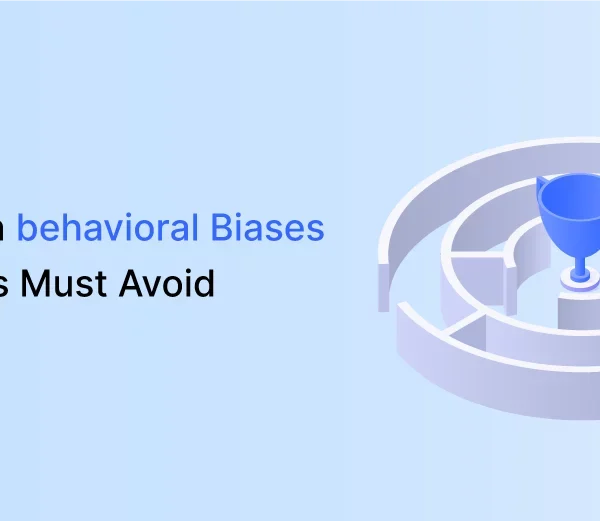Gold has remained investors’ favourite for ages. While the mode of investing in gold has evolved, the yellow metal always finds its place in the investor’s portfolio. This is primarily because it acts as a great hedge against inflation.
However, there has been a paradigm shift in how people invest in gold. An individual need not necessarily invest in physical gold anymore. So, what are these popular gold investing methods? Most importantly, which method is most suitable for us? Let’s find out!
Best Methods to Invest in Gold
Following are some of the best gold investment methods:
Physical Gold
You can invest in physical gold by physically visiting your jeweller. However, if you truly consider investing in physical gold, gold biscuits, bullion or gold coins are better than jewellery.
This is primarily because buying jewellery also involves paying for making and labour charges.
Further, when you invest in physical gold, you must also consider storage costs, theft risk, etc. People prefer storing their gold in bank lockers to keep it secure. These attract storage costs. Hence, such charges also get added to the cost of buying and maintaining physical gold.
Gold Mutual Funds
What’s getting traction among today’s investors is digital gold. A gold mutual fund is one of the most popular digital gold examples. They are convenient and hassle-free and thus remain popular.
For those wondering, gold mutual funds are types of mutual funds. In this case, the fund tracks the price of and provides the same returns as physical gold.
These are open-ended schemes that invest in gold manufacturing and gold mining companies. You can start investing with as low as Rs. 500.
To start investing, you must open a Demat account or visit any stockbroker’s website.
Gold Exchange Traded Funds (ETFs)
ETF or Exchange Traded Fund denotes a basket of securities traded on the stock exchange. In other words, when you invest in ETF, you get a bunch of assets you can sell or buy during market hours.
Gold ETFs function like regular ETFs. However, in this case, the underlying asset is physical gold. invests in 99.5% pure gold. These are units that represent physical gold in paper form. One unit equals one gram of gold.
Like a regular ETF, the gold ETF is also traded on stock exchanges like the Bombay Stock Exchange and National Stock Exchange.
To start investing, you must open a Demat account.
Gold ETFs have several advantages. Firstly, they combine the simplicity of gold investments with the ease of trading on exchanges. Secondly, you can redeem your holdings in bullion anytime.
Sovereign Gold Bonds
The Reserve Bank of India issues Sovereign Gold Bonds (SGBs) and the Government of India backs them. These are Government securities denominated in grams of gold.
One bond represents one gram of gold; therefore, investors can buy in multiples. The maximum investment limit in a financial year is four kgs per investor
The bonds come with an 8-year lock-in period of 8 years. However, you can sell them after 5 years. Therefore, investors with a medium to long-term investment horizon can consider investing in SGBs.
Further, the investors earn interest at the rate of 2.5% per annum on their SGB investments. If we hold the SGBs till maturity, then the gain on SGBs is tax-free. However, the interest on SGBs will remain taxable.
Gold Monetisation Scheme
Gold Monetisation Scheme (GMS) is another government-backed gold investment scheme. Under this scheme, you can deposit your gold in a savings bank account and earn periodic interest.
The scheme intends to mobilise gold held by different households and use it for productive purposes. Ultimately, the goal is to reduce the country’s reliance on gold imports.
The interest rate depends upon the period for which the gold is deposited. It typically ranges from 0.5% per annum to 2.5% per annum.
You can redeem your deposits in the form of bullion or cash. In other words, the gold returned may not be the same as the one you deposited.
Digital Gold vs. Physical Gold
When it comes to gold investment, investors often wonder whether to invest in physical or digital gold. Let us compare and analyse which option is more suitable:
| Parameters | Digital Gold | Physical Gold |
| Returns | Digital gold tracks the gold price; therefore, only a slight difference exists in the returns provided by digital and physical gold. However, digital god involves transaction fees, lowering your returns. | Physical gold provides a return based on the prevailing price of gold. |
| Expenses | Investing in digital gold involves added charges like costs of opening a Demat account, administrative charges, expense ratio of the fund etc. | Physical gold investments include making charges, labour charges etc. |
| Safety | Digital gold is considered safe as the RBI regulates it. Also, every penny of digital gold can be tracked easily. | Physical gold holdings may come with the risk of theft. |
In a Nutshell
Gold has always been considered a safe bet for Indian investors. Investors must always look at diversifying their portfolios to protect themselves in uncertain times.
In this context, gold investment is an option worth considering. Gold is a stable asset whose value increases with an increase in its demand. Hence, investors should consider investing a portion of their portfolio in gold.
While physical gold is the most traditional way to invest in gold, digital gold is also getting popular. If you are wary of holding gold in physical form, go for digital gold.
If you are looking to invest in digital gold, then Koshex has a dedicated gold investment platform where you can start investing for as low as Rs. 100.
You can buy, sell and accumulate 99.99% pure digital gold anytime anywhere. You can set up automated gold saving or even gift digital gold to your loved ones. So, start investing today!
Frequently Asked Questions
- Can I convert the digital gold investment to physical gold?Yes. Many digital gold platforms allow investors to convert their digital gold investments to physical gold. In other words, you can redeem your investments in the form of gold coins or gold bars.
- Can we avail of loans against gold investments – both digital and physical? Yes. You can use physical and digital gold as collateral to secure loans.
- Why investments in jewellery is losing popularity? Jewellery investments involve making and labour charges that can range between 3% to 25%. Moreover, jewellery needs to be held in a physical form that may attract theft. Digital gold is comparatively hassle-free. Hence, many investors are preferring digital gold over jewellery investments.









Leave a Comment